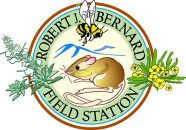Holland, Scott (1997)
Effects of Chaoborus Predation on the Temporal and Spatial Distribution of Daphnia in pHake Lake.
Bachelor of Science, Harvey Mudd College, Biology.
Advisor: Catherine McFadden.
Daphnia are small herbivorous crustaceans that reproduce asexually under stable environmental conditions. The presence of predatory Chaoborus larvae induces a morphological adaptation in Daphnia known as neck teeth. Daphnia clones differ in their abilities to produce neck teeth, which increase an individual’s ability to survive encounters with Chaoborus but slow the development of the individual and delay the time of first reproduction. Based on this information, we hypothesized that Chaoborus densities in a small California pond would significantly affect Daphnia population densities and Daphnia clonal distributions. To test this hypothesis, we measured Chaoborus and Daphnia densities at four sites at pHake Lake during February and March of 1997 and examined Daphnia clonal distributions at these sites using starch gel allozyme electrophoresis. Daphnia clonal distributions showed significant differences among sites and between months, but no significant variation was observed in Chaoborus densities, which were very low, or in Daphnia densities. We thus conclude that Chaoborus predation was most likely not intense enough during February and March to have a significant effect on the Daphnia population, and suggest that the study be expanded to include summer months, when Chaoborus may be more abundant, in order to fully test our hypotheses.
